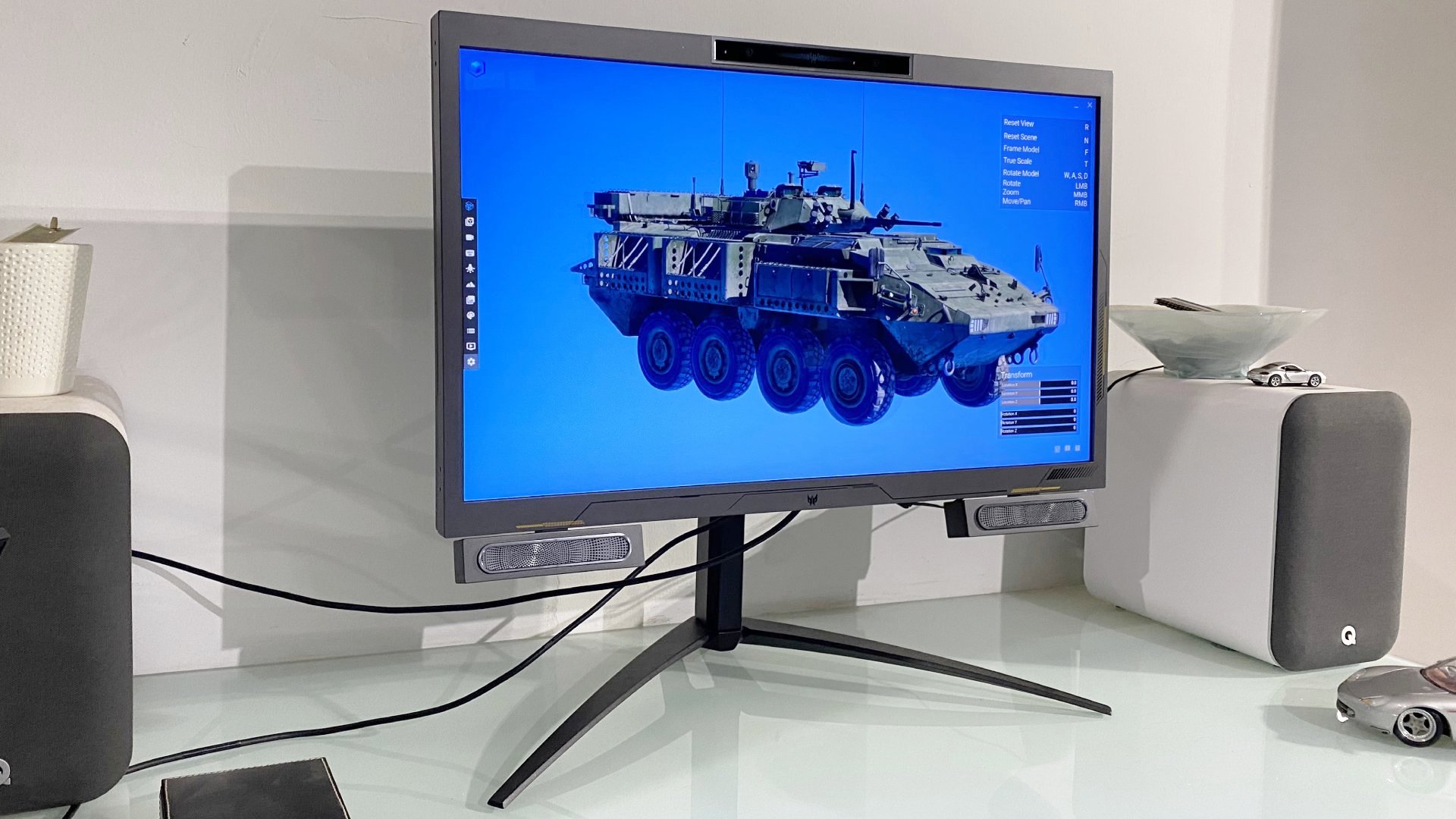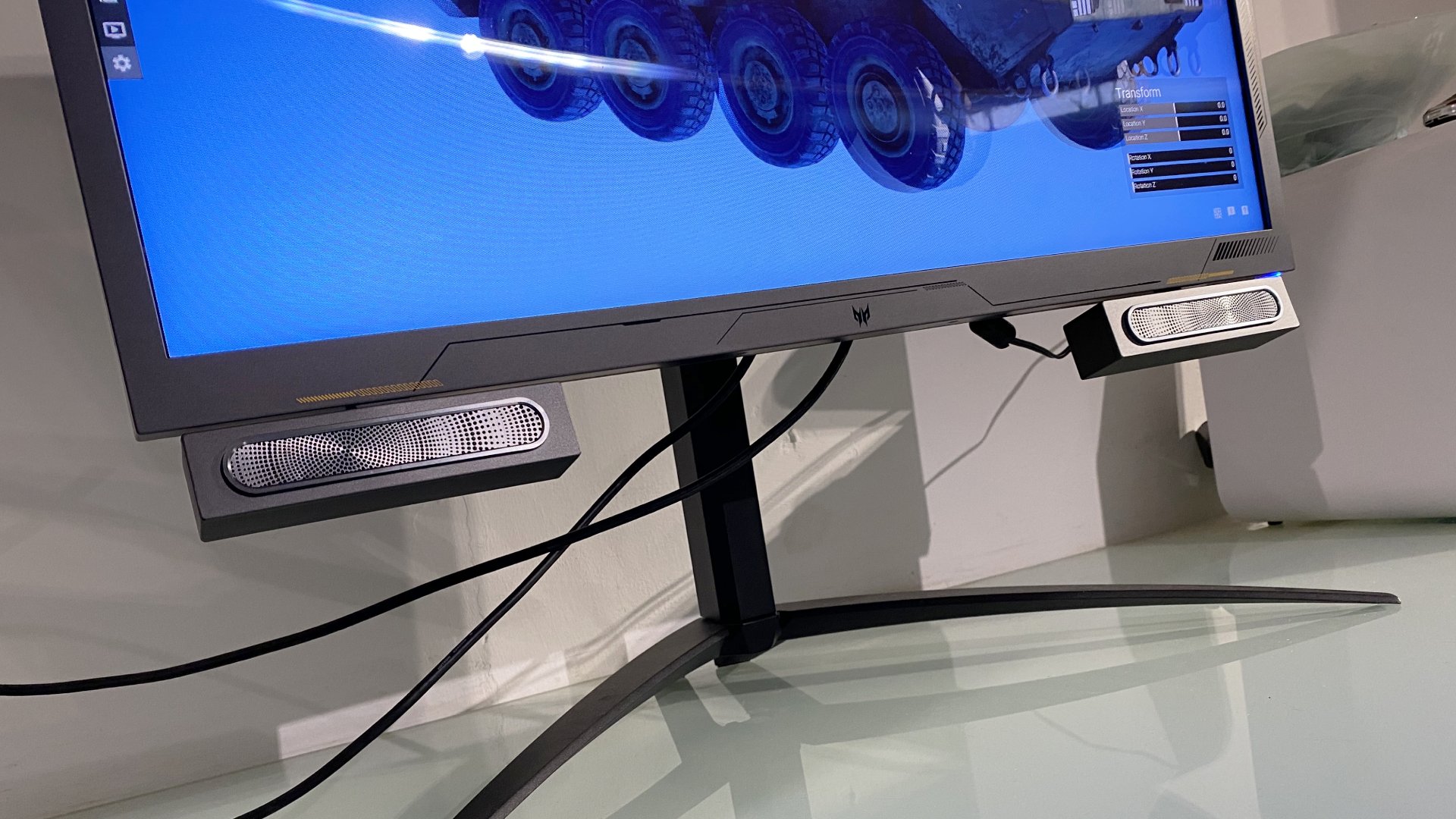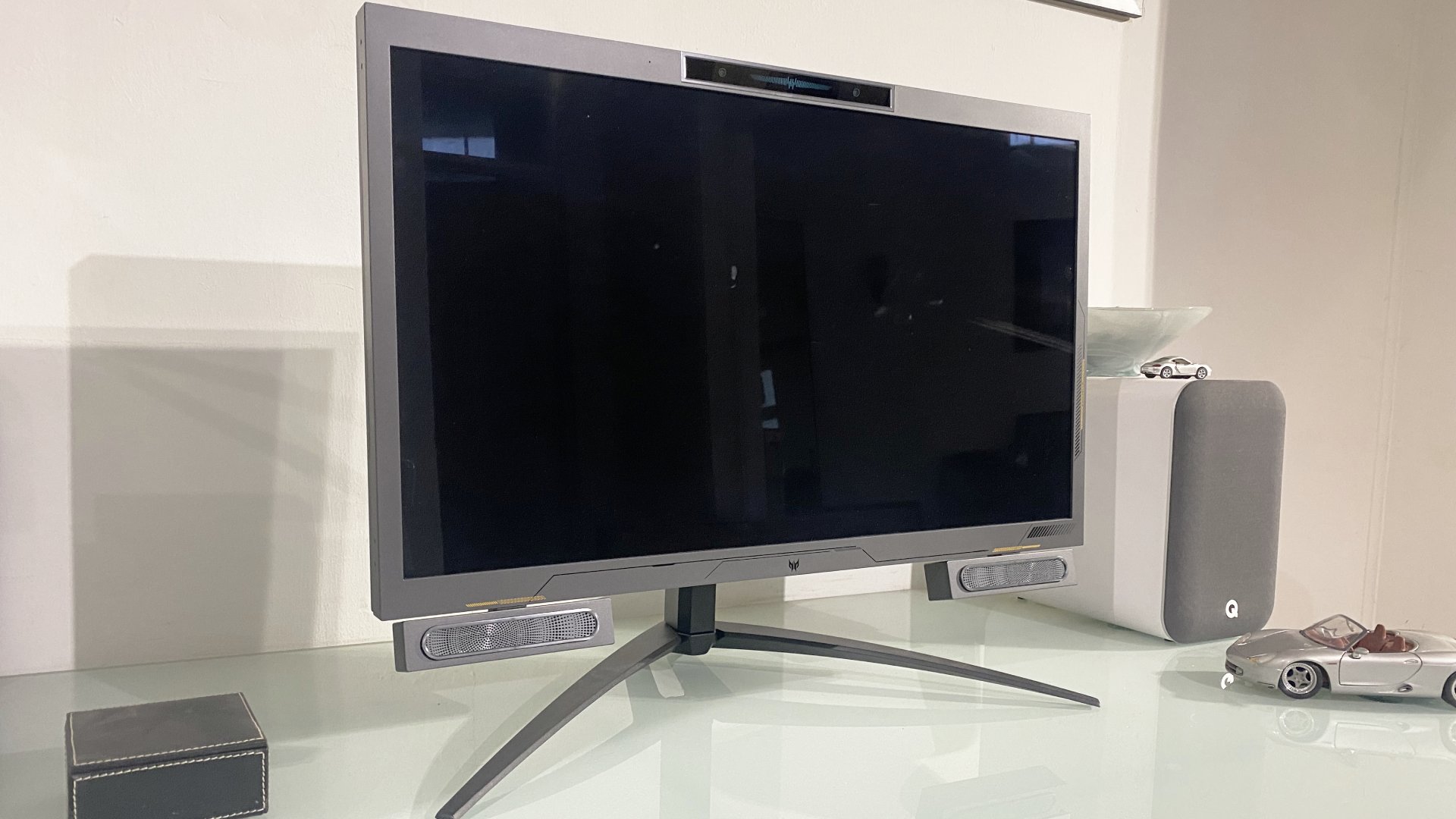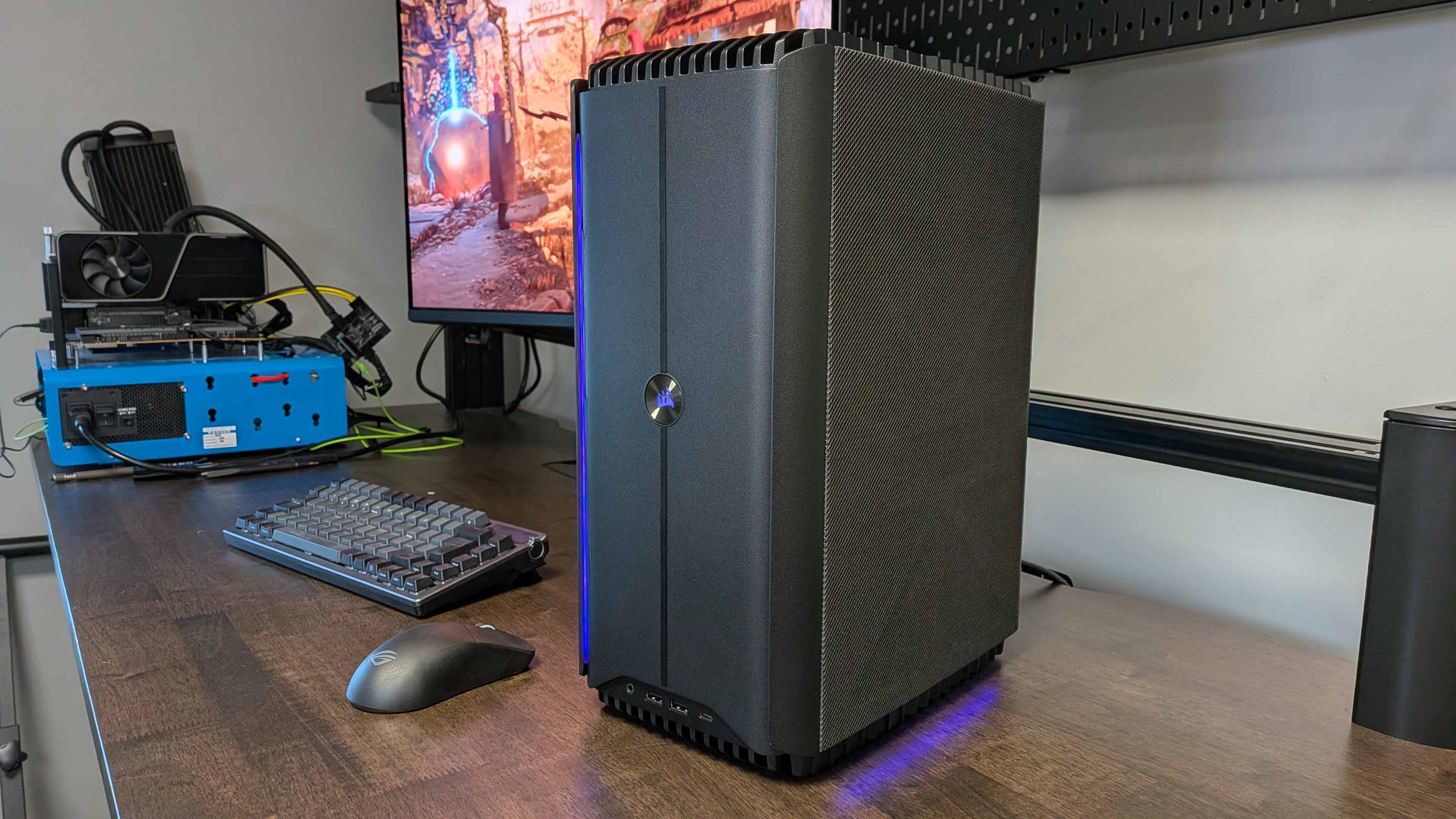Our Verdict
3D visuals plus spatial audio in one monitor? Yup, there's an awful lot to process with the Acer Predator SpatialLabs View 27. While it's ultimately unsuccessful, it is a tantalising glimpse of a possible future.
For
- Incredible when it works well
- Nice 4K panel
- 160 Hz refresh
Against
- 3D visuals are inconsistent
- Very expensive
- Spatial audio deserves a better showcase
PC Gamer's got your back
As long as I've been in this technology media game—and the origin story there dates back to the early Mesozoic—some company or other has been trying to flog 3D display technology. So far, none of it has stuck. Even Nvidia's 3D Vision goggles didn't catch on. Could that be about to change with the new Acer Predator SpatialLabs View 27? Put simply, is this the glasses-free 3D tech you've been waiting for?
When it comes to gaming, and without wishing to give away too much, too soon, the simple answer is, nope, you probably won't want to buy this monitor for gaming. However, at its best this fascinating 3D display is stunning; an experience you won't quickly forget. Hold that thought and get comfy, there's a lot to get through when it comes to the technology involved here.
In simple terms, what you're looking at here is a 27-inch 4K gaming monitor with an IPS-type panel (actually AHVA, but that's splitting hairs) and 160 Hz refresh support. It's pretty well specified with a glossy panel coating and plenty of connectivity, including USB-C. What you don't get is any kind of HDR support, not even basic VESA DisplayHDR400.
That's not a disaster given most LCD-based monitors with claimed HDR support deliver little by way of true HDR visuals. But omitting even basic HDR signal decoding is rather stingy, especially considering the painful asking price. Oh yeah, did I mention, this thing costs $1,999 or £2,199. Holy moly.
Of course, this is no ordinary 27-inch 4K panel. You can guess that from the slightly unsightly oversized bezels. These are needed to house tracking cameras, and some odd-looking speakers tacked onto the lower bezel.
For starters, the Acer Predator SpatialLabs View 27 offers glasses-free 3D visuals. The glasses-free bit is absolutely critical since the need to wear some kind of goggles or headset has arguably been the chief impediment to widespread adoption of many previous attempts at 3D visuals.
With this Acer monitor however, you don't need to wear anything or really even do anything. The 3D effect just works. How is that possible? The short answer is a combination of eye-tracking camera tech and lenticular lenses. The long answer involves the lenticular lenses sending a slightly different image to each eye, creating the illusion of a fully 3D image.
Keep up to date with the most important stories and the best deals, as picked by the PC Gamer team.
It's fundamentally a complex active technology, which applies both to the eye-tracking camera and the lenticular lenses and that explains why it hasn't been done before. At least not at a vaguely accessible price point.
Oh, and one more thing. Not only does this monitor have visual 3D capability. It also has integrated 3D sound courtesy of a spatial audio system from UK outfit Audioscenic. Yeah, it's a lot to take in, whether for your ears or your eyes.
So, what's it actually like? The answer is that it depends on what you're doing, watching or playing. By way of example, Acer has included an app for viewing 3D models, individual game figures, vehicles, things like that. You can load up one of the provided models, including an armoured personnel carrier, and then manipulate it, spin it around, zoom in and out, that kind of thing.
And you know what? It looks totally incredible. It takes a moment for your eyes to adjust, but once they do the illusion of, well, 3D-ness is remarkable, even tangible. It absolutely looks like the model is sticking about a foot or so right out of the screen. It's very convincing and feels like you could reach out and touch the thing, at which point the illusion inevitably breaks down.
Anyway, for engineering, science and medical applications, I'm sure it's fantastic. But what about for gaming? Running an entire game world is a very different discipline and for that task, this 3D technology is far less successful.
For starters, the effect is less consistent when multiple objects are being rendered. Whether it's an eye adjustment thing or a limitation of the lenticular tech, you tend to find only the object you're focussing on reliably resolves properly, with other elements in your peripheral vision tending to suffer from a noticeable double-vision effect.
It feels like you're looking at a miniature version of a world, not a life-sized universe.
That detracts from the overall sense of peering through a window into a fully realised 3D world. You do get that up to a point, but it's not a consistent experience. The other problem is that when it does work, the impression you get isn't of a life-sized 3D vista, but more a scale model.
Let me explain. Imagine a 3D object sticking out of the screen, perhaps a tank or a person. Well, that object obviously isn't life sized and that's very much the impression you get—of a scale model rather than the full-sized object viewed at distance. It feels like you're looking at a miniature version of a world, not a life-sized universe.
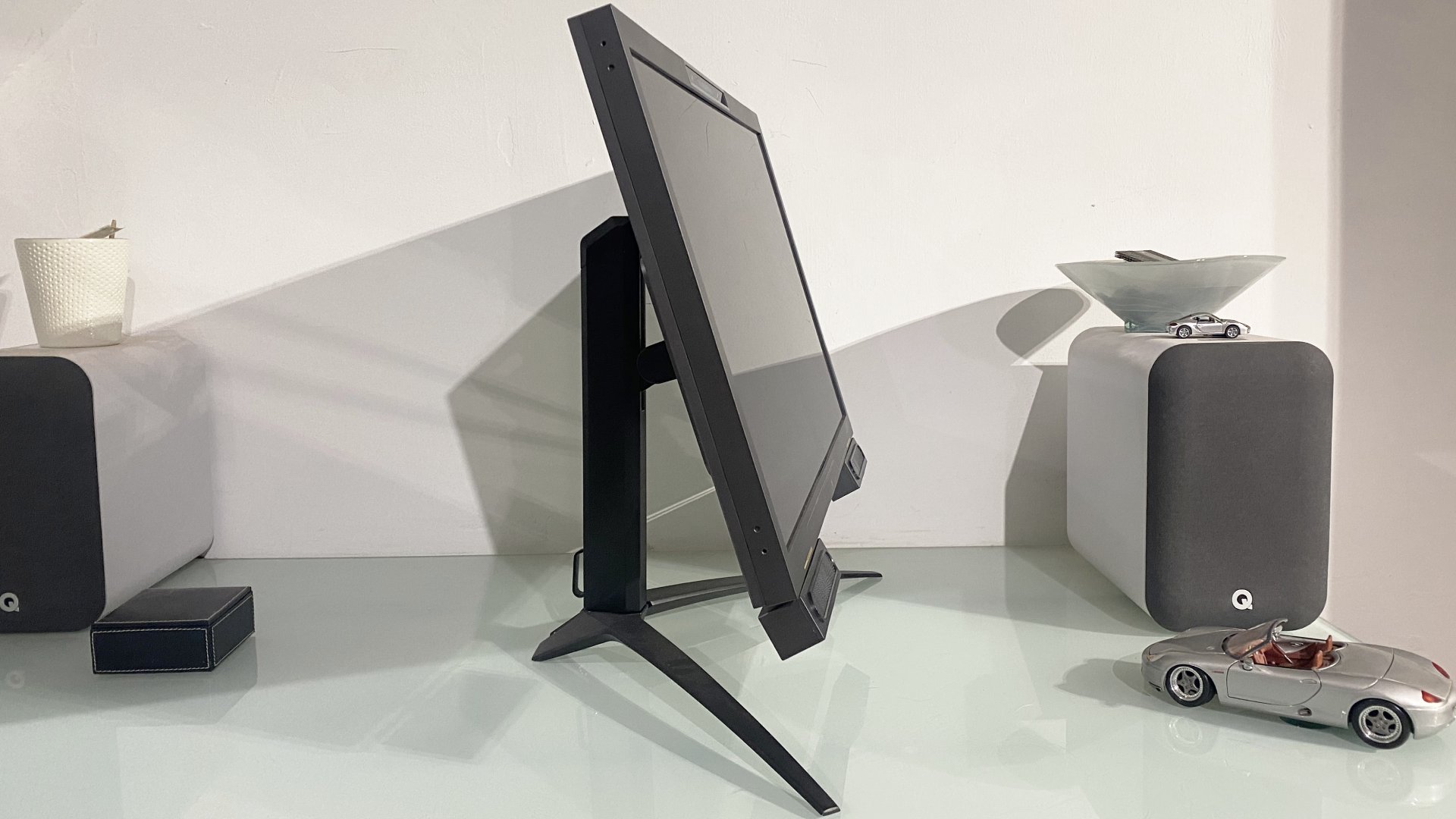
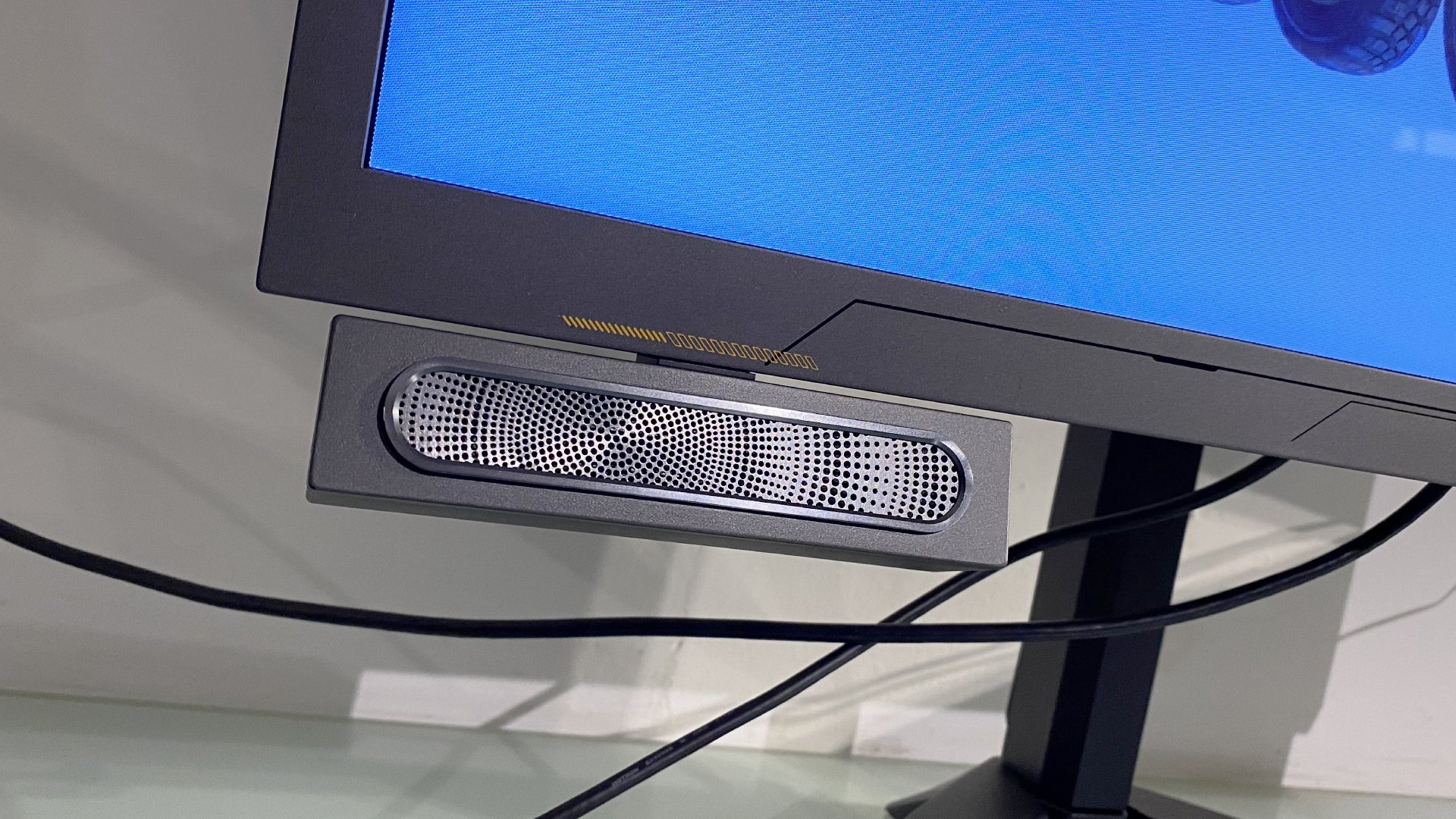
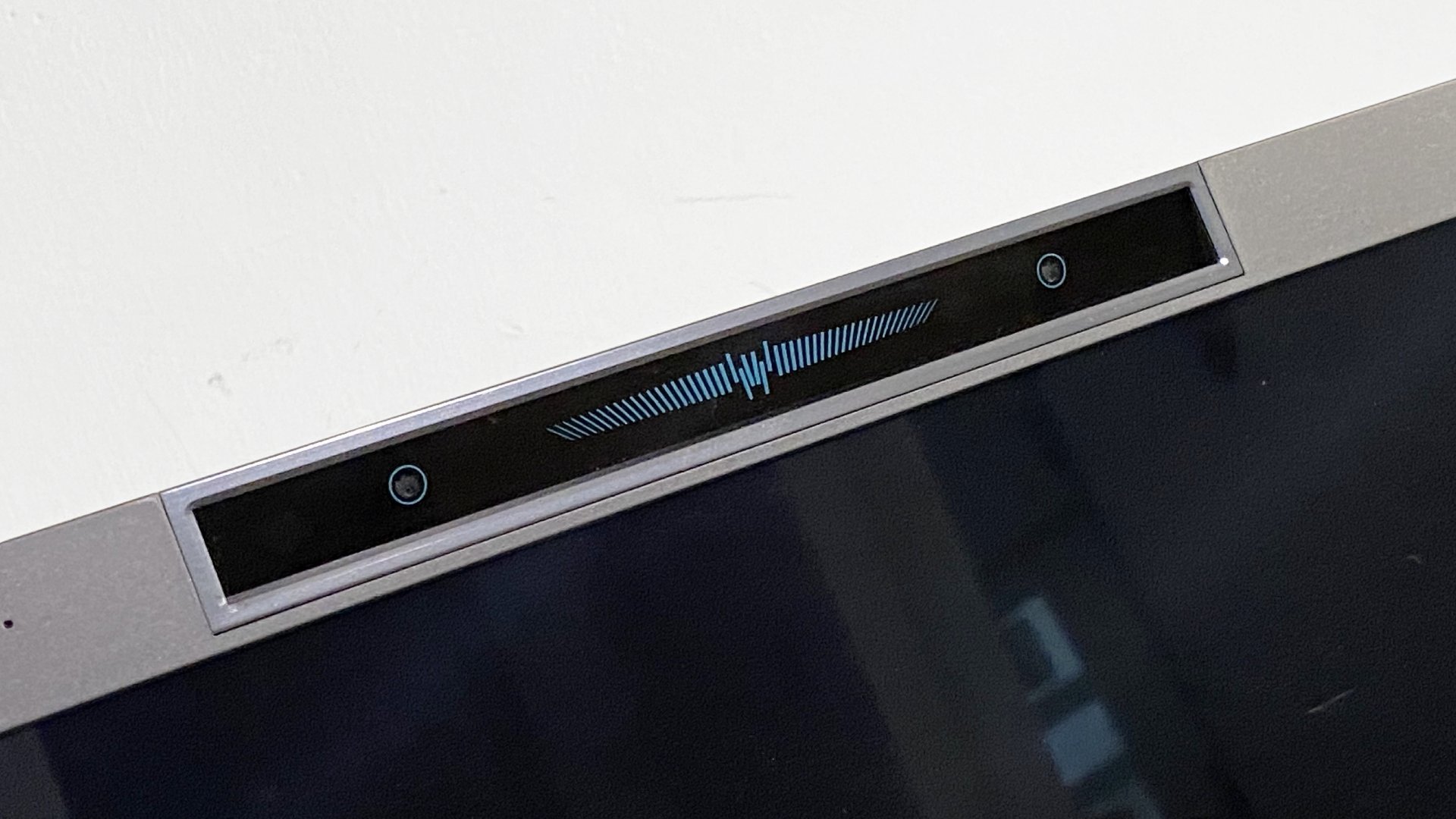

All told, and combined with the double-vision thing, the overall experience is fairly patchy and a bit distracting. Personally, I wouldn't want to game with this technology as it currently is. But apart from the actual visuals, there are other drawbacks from a gaming perspective.
It's a little bit of a palaver getting games running. You'll need the Spatial Labs Experience Center app installed, then SpatialLabs TrueGame, which is a gaming platform that's superficially similar to Steam, but just for 3D games. Of course, first you must also install any given game using whatever the normal method is, for instance via Steam. Then you manually point the SpatialLabs TrueGame app at the installed location.
Just for the record, specific per-game support is required. You can check out the full list here. In terms of sheer numbers, it looks decent. But on closer inspection you'll find a lot of the titles are older, mediocre affairs, while many, perhaps most, of the latest and most compelling releases simply don't feature. For now, at least.
It's also worth noting that image quality takes a hit with the 3D effect enabled. As a consequence of 'projecting' a different image to each eye, the lenticular lenses effectively cut the resolution of the image in half and give the screen a slightly odd, grainy look. It's a little like an old CRT displaying interlaced video.
What's more, even when the 3D effect is disabled, the image is slightly impacted if you view the display off-center in the vertical axis. It's subtle and the best equivalent I can think of is the circuitry that can occasionally be just about visible on some touchscreen panels. It's not a major issue, but when you're paying this much for a display, any slight flaw becomes significant.
As for the 3D spatial audio setup from Audioscenic, it's a somewhat similar story. To be honest, it's a little overshadowed by the 3D visual tech, which is enough alone to be getting your head and eyes around, let alone having another novel technology to absorb. The spatial audio probably deserves its own, dedicated, debut.
Whatever, to cut a long story short it too can work well, but has limitations. Like the 3D visuals, it relies on a camera and head tracking, which is fine. The first problem arrives with the built-in speakers. They're necessary, as opposed to using whatever speakers you already have, because their location needs to be very carefully calibrated.
The actual sound quality simply isn't terribly good.
In theory, that is possible with the end-user's speakers. In practice, the calibration requirements would be too onerous. Anyway, the speakers look like a fairly ugly afterthought and they are pretty small and offer limited dynamic range.
That makes it a little tricky to fully appreciate the clever spatial effect that the Audioscenic system is capable of producing from mere stereo speakers. To an extent, it can fool you into thinking sounds are coming from all around you, which is a nice trick from just two speakers. But the actual sound quality simply isn't terribly good.
On a more positive note, the Audioscenic system is compatible with any game with spatial audio, so it's much more widely supported than the SpatialLabs 3D visuals. But, while it does have some advantages over a half-decent set of cans—including the sense of sounds coming from a distance—I'd personally prefer the headphones for the massively richer and more dynamic audio experience.
✅ You fancy a novel 3D experience: When the Acer Predator SpatialLabs View 27 works, it's a stunning 3D experience that you won't quickly forget.
❌ You want a compromise-free 4K gaming monitor: Even for a 4K gaming panel, this monitor is super expensive and the 3D visuals are dubious for gaming.
Oh and one final comment regarding broader usability. To enable all its features, this monitor needs to be connected via both a display input and via a USB-A to USB-C cable. Hardly the end of the world, but that cable clutter slightly adds to a sense of a complicated and slightly unfinished technology.
So, what to make of the Acer Predator SpatialLabs View 27 overall? There's some seriously clever technology here. Almost too much to process from a single product. But from a purely gaming perspective, it's clearly suboptimal.
If you could have this technology for only a small price premium, it could be interesting as an occasional diversion. Perhaps the 3D effect could be toggled for specific elements of a game where it works really well. But given the huge added cost, there are just too many limitations.
As for the spatial sound, in some ways it works better than the 3D display aspect. But it has its own limitations and, again, isn't something we'd want to pay heavily for in this format. All told, then, the Acer Predator SpatialLabs View 27 makes for a fascinating tech demo. But as a product, something you might actually buy? In that context, it's a lot less convincing, especially at its current sky-high pricing.
3D visuals plus spatial audio in one monitor? Yup, there's an awful lot to process with the Acer Predator SpatialLabs View 27. While it's ultimately unsuccessful, it is a tantalising glimpse of a possible future.

Jeremy has been writing about technology and PCs since the 90nm Netburst era (Google it!) and enjoys nothing more than a serious dissertation on the finer points of monitor input lag and overshoot followed by a forensic examination of advanced lithography. Or maybe he just likes machines that go “ping!” He also has a thing for tennis and cars.
You must confirm your public display name before commenting
Please logout and then login again, you will then be prompted to enter your display name.
